Mink oil is a common product used to treat leather, as it is known to help keep the material soft and protected. However, if you have recently applied mink oil to your leather and now regret it, don’t worry – there are methods to remove it. In this article, we will outline a few methods how to remove mink oil from leather. Read on for more information!

Leather is a natural material that tends to soak up oils and liquids. Mink oil is no exception, and if not removed, it can cause the leather to become saturated, stiff, and even rot. The mink oil will need to be physically removed from the leather in most cases. Many commercial leather cleaners and conditioners contain solvents that can help break down the mink oil and remove it from the material’s surface.
How to Remove Mink Oil From Leather Detailed Guide
Method 1: Use Dish Soap and Brass Bristle Brush
Dish soap is a detergent used to clean dishes and other kitchen utensils. It is effective in removing grease and grime. Brass bristle brushes are brushes made of brass bristles, known for their ability to scrub away dirt and stains.
What You Will Need:
- Dish soap
- Brass bristle brush
- Bucket of water
- Sponge
Step 1:
Determine the severity of the mink oil stain. If the stain is light, you can likely remove it with a damp sponge. If the stain is more severe, you will need dish soap and a brass bristle brush.
Step 2:
Fill a bucket with water and add dish soap. Swish the water around to create suds.
Step 3:
Dip the brass bristles brush into the suds and scrub the leather area where the mink oil is located.
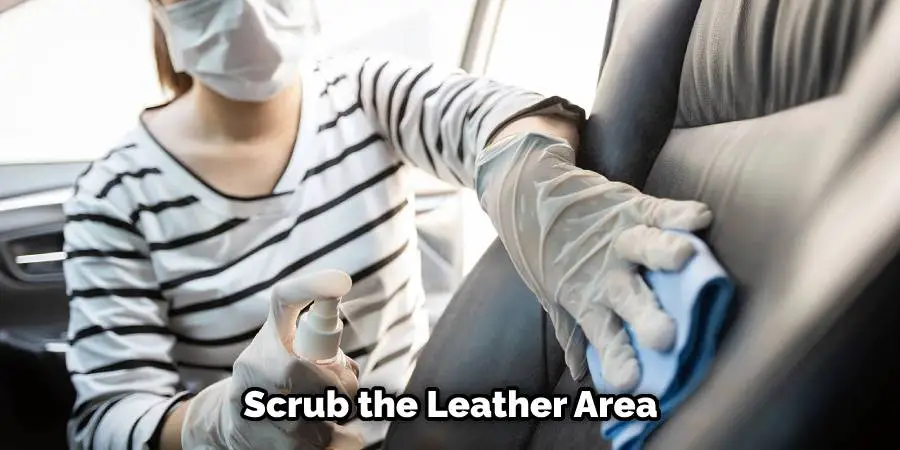
Step 4:
Rinse the area with a sponge and water.
Step 5:
Let the area air dry.
The pros of this method are that it is effective in removing the mink oil from the leather, and it is a relatively inexpensive way to do so. The con of this method is that it can be time-consuming.
Tips:
- If the stain is still visible after using the dish soap and brass bristle brush method, then you can try using mineral spirits.
- Test any cleaning solution on an inconspicuous leather area first to ensure it does not cause any damage.
Method 2: Use Leather Cleaner
Leather cleaner is a specially formulated product that helps remove dirt, oils, and other pollutants from leather. It also helps to condition and protect the leather, keeping it looking and feeling new.
Leather Cleaner is a water-based cleaner formulated to clean leather without damaging the finish. It contains emulsifiers and surfactants that break up the oils and dirt on the surface of the leather. The product also has a built-in conditioner that helps restore the natural suppleness and shine to the leather.
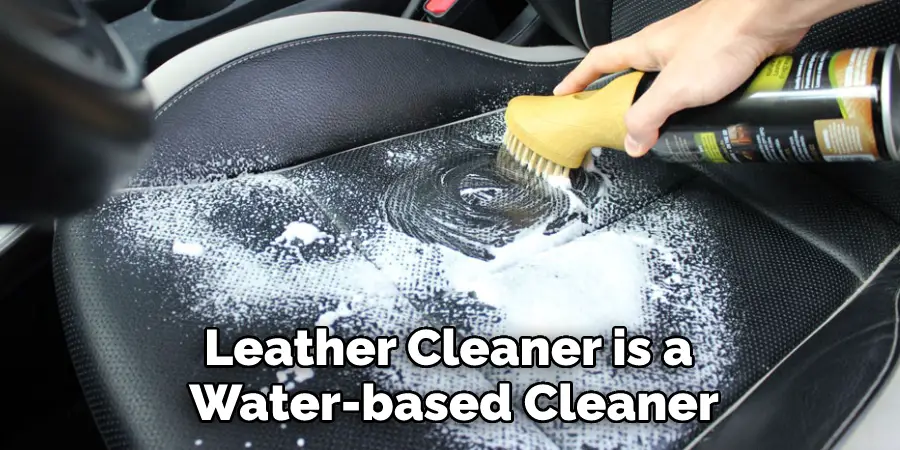
What You’ll Need:
- Leather cleaner
- Water
- Spray bottle
- White cloth
Step 1:
Not all leather cleaners are created equal. Some are designed for specific types of leather, while others are general-purpose products. When choosing a cleaner, be sure to select one specifically designed for the kind of leather you are cleaning.
Step 2:
Most leather cleaners come in a concentrated form and must be diluted with water before use. Read the manufacturer’s instructions carefully to determine how much water to add. Generally, a 1:1 ratio of cleaner to water is sufficient. Then, pour the cleaner into a spray bottle for easy application.

Step 3:
Spray the cleaner onto a white cloth and apply it to the leather surface. Be sure to work in a circular motion to ensure even coverage. Allow the cleaner to penetrate the leather for a few minutes before wiping it off with a clean cloth.
Step 4:
Rinse the leather with clean water to remove all of the cleaner. Be sure to rinse off any excess cleaner, as it can damage the finish if left on the surface.
Step 5:
After cleaning, it is essential to condition the leather. This will help restore its natural shine and softness. Apply a small amount of leather conditioner to a white cloth and rub it into the leather surface. Allow the conditioner to absorb for a few minutes before wiping it off with a clean cloth.
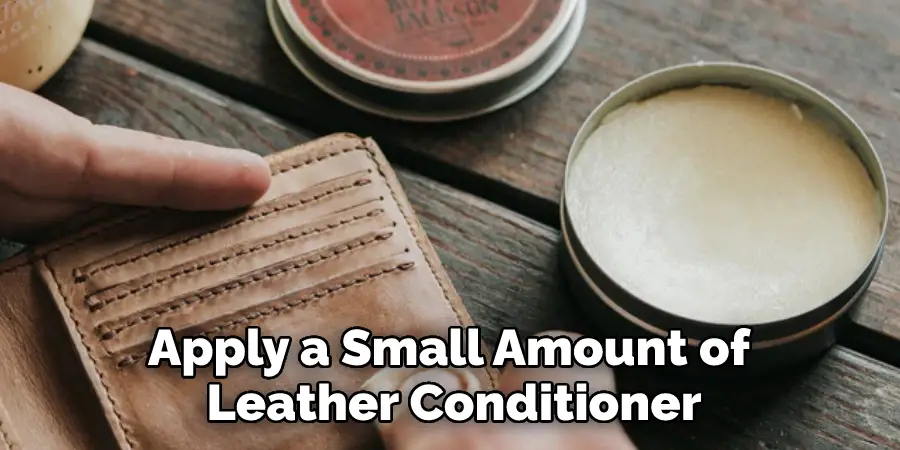
Leather cleaner and conditioner can be purchased at most hardware stores or online retailers.
Tips:
- Always test a small area of the leather before applying the cleaner to ensure it does not damage the finish.
- Do not use an excessive amount of cleaner, as it can damage the leather.
- Rinse the leather with clean water after cleaning to remove all of the cleaner.
Method 3: Use Leather Degreaser and Hairspray
A leather degreaser is a type of cleaning product that is specifically designed to remove grease and oils from leather surfaces. It works by breaking down the molecules of the oil or grease, allowing it to be removed from the surface. Hairspray is a good choice for eliminating mink oil because it contains alcohol, which helps to dissolve the oil.
Leather degreasers are often effective at removing mink oil from leather. Hairspray can also be effective, but it is essential to test a small area to ensure the hairspray does not damage the leather. If the mink oil is particularly stubborn, it may take several applications of the leather degreaser or hairspray to remove it altogether.
What You’ll Need:
- Leather degreaser
- Hairspray
- Paper towels
- Cloth or soft brush
Step 1:
Leather degreasers can be applied in various ways, so reading the instructions carefully before starting is essential. Some degreasers can be sprayed directly onto the leather, while others need to be diluted with water before use.
If the leather degreaser needs to be diluted with water, mix one part of the degreaser with four parts of water in a spray bottle. Shake well before use.
Spray the leather degreaser directly onto the mink oil stain. Do not pour it on, as this could cause it to run and spread the oil further.
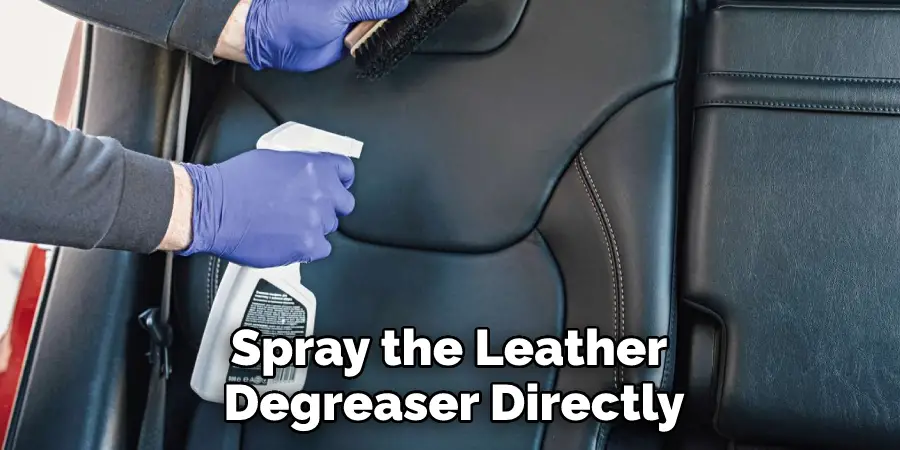
Step 2:
The degreaser will need to sit on the oil stain for at least 6-8 hours to break down the oil molecules. Do not rush this process, as the degreaser must have enough time to work.
Step 3:
After the degreaser has had a chance to work, use a paper towel or cloth to wipe it away, be sure to remove all of the degreasers; if any residue remains, it can be removed using a soft brush.
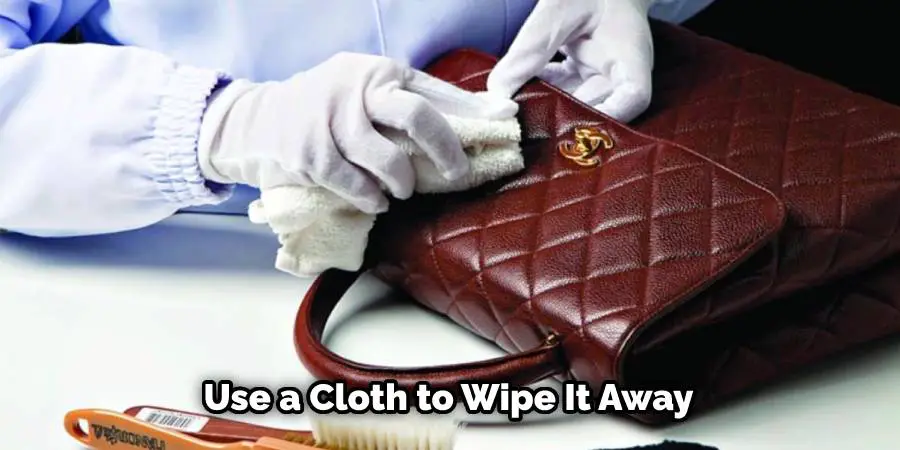
If the mink oil stain is still visible, repeat steps 1-3 until it is completely removed.
Step 4:
If the mink oil stain is still visible after using the leather degreaser, apply hairspray to it. Test the hairspray on a small leather area first to ensure it does not damage the surface.
Hairspray contains alcohol, which helps to dissolve oils like mink oil. Spray the hairspray directly onto the stain and let it sit for a few minutes.
Step 5:
Wipe away excess hairspray with a paper towel or cloth. If the stain is still visible, repeat steps 4-5 until it is completely removed.
If you follow these steps, you should be able to remove mink oil from leather without any trouble. Just be sure to read the instructions carefully and take your time so that you do not damage the surface.
Step 6:
Once the mink oil stain is gone, allow the leather to dry completely before using it again. Do not apply any products to the leather until it is completely dry.
Step 7:
After removing the mink oil, applying a leather conditioner to the surface is essential. This will help to keep the leather hydrated and protected.
There are many different types of leather conditioners available, so it is important to choose one suited for your specific type of leather. Follow the instructions on the bottle carefully to ensure proper application.
Leather conditioners can be applied with a cloth or brush, depending on the conditioner used. Be sure to apply it in a thin layer and avoid using too much, as this can cause the leather to become greasy.
Allow the conditioner to dry completely before using the leather again.
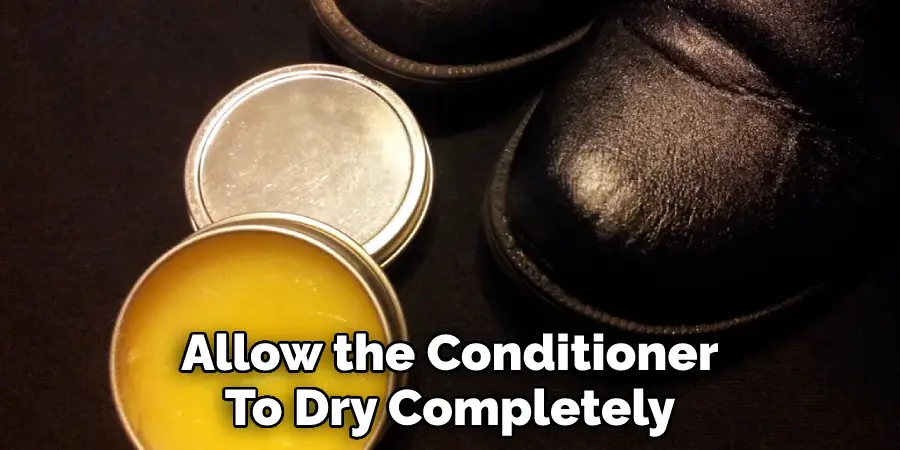
Tips:
If the mink oil stain is particularly stubborn, it may take several degreasers or hairspray applications to remove it altogether.
- Be sure to read the instructions on the leather degreaser and hairspray bottles carefully before using them. Misapplying them could damage the leather.
- It is essential to test a small area of leather first before using hairspray to remove mink oil, as some types of hairspray can damage the surface.
- After removing the mink oil, apply a leather conditioner to the surface to keep it hydrated and protected.
Method 4: Use Saddle Soap
If the mink oil has penetrated deep into the leather, you might need to use saddle soap to remove it. Saddle soap is a type of soap specifically made for cleaning leather. It is strong enough to remove dirt and oils from the leather but gentle enough to avoid damaging the surface.
What You’ll Need:
- Saddle soap
- Bucket of water
- Sponge
- Soft cloths
- Leather conditioner
Step 1:
Before starting, you’ll need to determine if the leather is wet or dry. If the leather is wet, do not try to clean it yet – you’ll need to wait until it’s completely dry.
Step 2:
Mix a small amount of saddle soap with water in a bucket. It should form a thick lather.
Step 3:
Dip a sponge into the cleaning solution and scrub the leather. Be sure to clean all areas, including the seams and crevices. Rinse the sponge frequently and switch to a new sponge if needed.
Step 4:
Once cleaning the leather, use a soft cloth to dry it off. Be sure to dry the seams and crevices as well.
Step 5:
Once the leather is dry, apply a coat of leather conditioner. This will help protect the surface and keep it looking shiny and new. This is a crucial method in how to remove mink oil from leather. This is a crucial step in how to remove mink oil from leather.
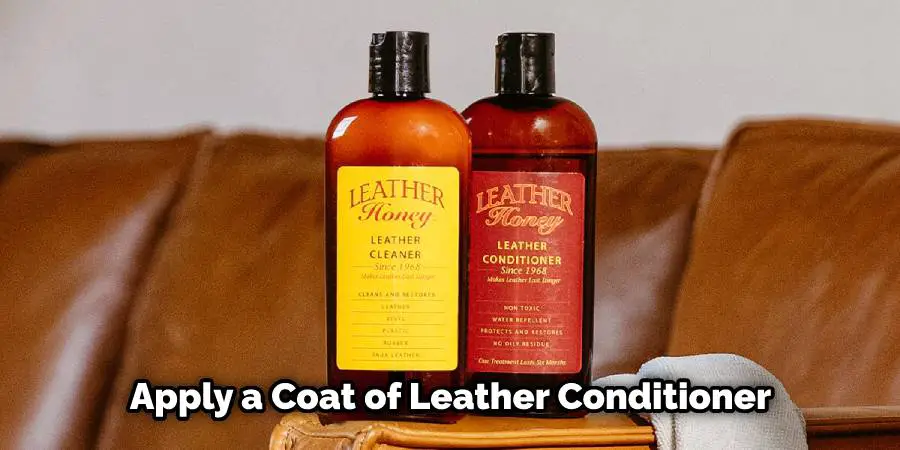
Tips:
- If the leather is extremely dirty or stained, you might need to repeat these steps a few times.
- Be careful not to get the saddle soap on any other surfaces, as it can be harmful if ingested.
- Always test the cleaning solution on an inconspicuous leather area first to ensure it doesn’t damage the surface.
Method 5: Use Baking Soda & Hairspray
Baking soda and hairspray can be used to remove mink oil from leather. The baking soda will help to absorb the oil, while the hairspray will help to polish the leather and make it look shiny. This is a safe and easy method that can be used at home.
However, this method is not as effective as some of the others listed here. It may be difficult to remove if the mink oil has been on the leather for a long time or in a hard-to-reach place.
What You’ll Need:
- Baking Soda
- Hairspray
- Soft Cloth
- Bowl
- Water
Step 1:
Before starting, make sure that the area you are working on is well-ventilated. The baking soda can be irritating to breathe in, so working in a room with open windows or doors is best.
Step 2:
Pour some baking soda into a bowl.
Step 3:
Add enough water to the baking soda to make a thick paste.
Step 4:
Apply the paste to the leather using a soft cloth.
Step 5:
Let the paste dry for about 15 minutes.
Step 6:
Once it has dried, use a vacuum cleaner to remove any remaining baking soda from the leather.
Step 7:
Spray the leather with hairspray and then polish it with a soft cloth.
This should remove any mink oil that is still present on the leather. If the oil is stubborn and won’t come off, you may need to try a different method.
You Can Check It Out to Armor All Off Leather
Tips:
- Be careful not to get the baking soda on any other parts of the leather, as it can be hard to remove.
- Don’t use too much hairspray, or it may make the leather look shiny but streaky.
- If you’re having trouble removing the mink oil with this method, try using a different type of baking soda (such as sodium bicarbonate).
Does Mink Oil Rot Leather?
No, mink oil does not rot leather. It can be quite beneficial for maintaining the integrity of leather goods. Mink oil is a natural product derived from the fat of minks. It is rich in fatty acids and nutrients that help to keep leather soft and supple. Additionally, mink oil forms a water-resistant barrier on the surface of leather, helping to protect it from moisture and dirt.
The downside of mink oil is that it can darken light-colored leathers. For this reason, it is essential to test the oil on a small area of the leather before applying it to the entire piece. When appropriately used, mink oil can help to prolong the life of your favorite leather goods.
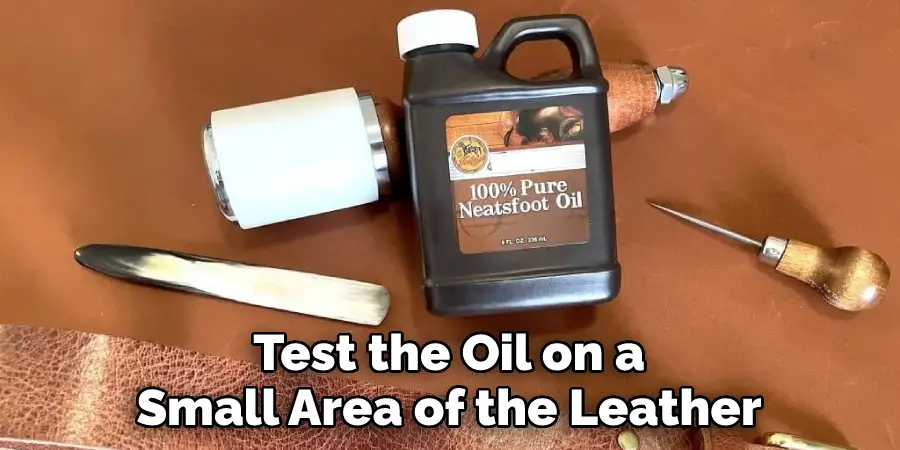
Mink Oil vs. Saddle Soap: Which one should you use?
When it comes to leather care, many people ask, “Should I use mink oil or saddle soap?” Although both are popular products used to condition and protect leather, they have very different uses and should be combined.
Mink oil is an all-purpose leather conditioner that helps to soften, preserve and waterproof the leather. It is also great for restoring dry and cracked surfaces. On the other hand, saddle soap is primarily used as a cleaner to remove dirt and grime from leather surfaces. It also helps to polish the surface of the leather, leaving it shiny and looking good as new.
Both mink oil and saddle soap have their own distinct benefits when it comes to treating leather goods. When selecting which product to use, consider what your goals are for using them. For example, if you need a product that will clean, condition, restore and waterproof your leather goods, then mink oil is probably the better choice. However, if you simply want to clean off dirt and grime while polishing your piece, then saddle soap will do just fine!
Frequently Asked Questions
Does Saddle Soap Remove Mink Oil?
Saddle Soap is not specifically designed to remove mink oil. However, it can be assumed that if Saddle Soap is effective at removing other types of oils and residues, it would likely also be effective at removing mink oil.
Which is Better for Leather Mink Oil or Saddle Soap?
Both leather mink oil and saddle soap can be beneficial for your leather goods. Both products work to clean and condition the surface of your leather, but they may have different outcomes depending on the type of leather you are working with.
Leather mink oil is specially formulated for delicate or sensitive-skinned animals such as coats of mink, foxes, rabbits, or dogs. It is also effective in cleaning other types of animal hides, including those from horses, pigs, goats, sheep/lambs/, etc. In fact, it has been shown to outperform most commercial Leather Cleaners when it comes to removing dirt, grease, and residues.
Saddle soap, made from primary lanolin (a derivative of wool) is great for dealing with tough stains that resist regular cleaning solutions like water or Mr. Clean Erasers.
Does Mink Oil Darken Leather?
The effects of mink oil on leather may vary depending on the type and quality of leather used. Some people say that mink oil can darken leather, while others claim that it has no effect at all. Ultimately, you’ll need to test it out yourself to see if there are any adverse effects.
Why Does Mink Oil Darken Leather?
Mink oil is a type of vegetable oil that is extracted from the coats of minks. It has an oily texture and a dark color, which is due to the presence of phthalic acid. Phthalic acid is what gives mink oil its characteristic smell and flavor.
When exposed to light, phthalates become reactive and release gas into the air. This gas aggravates respiratory conditions in humans, including asthma and emphysema. In addition to this effect on human health, mink oil can also discolor leather because it reacts with dyes used in certain leathers to create colors such as brown or black.
Does Saddle Soap Remove Mink Oil?
Saddle Soap is not specifically designed to remove mink oil. However, it can be assumed that if Saddle Soap is effective at removing other types of oils and residues, it would likely also be effective at removing mink oil.
Which is Better for Leather Mink Oil or Saddle Soap?
Both leather mink oil and saddle soap can be beneficial for your leather goods. Both products work to clean and condition the surface of your leather, but they may have different outcomes depending on the type of leather you are working with.
Leather mink oil is specially formulated for delicate or sensitive-skinned animals such as coats of mink, foxes, rabbits, or dogs. It is also effective in cleaning other types of animal hides, including those from horses, pigs, goats, sheep/lambs/, etc. In fact, it has been shown to outperform most commercial Leather Cleaners when it comes to removing dirt, grease, and residues.
Saddle soap, made from primary lanolin (a derivative of wool) is great for dealing with tough stains that resist regular cleaning solutions like water or Mr. Clean Erasers.
Does Mink Oil Darken Leather?
The effects of mink oil on leather may vary depending on the type and quality of leather used. Some people say that mink oil can darken leather, while others claim that it has no effect at all. Ultimately, you’ll need to test it out yourself to see if there are any adverse effects.
Why Does Mink Oil Darken Leather?
Mink oil is a type of vegetable oil that is extracted from the coats of minks. It has an oily texture and a dark color, which is due to the presence of phthalic acid. Phthalic acid is what gives mink oil its characteristic smell and flavor.
When exposed to light, phthalates become reactive and release gas into the air. This gas aggravates respiratory conditions in humans, including asthma and emphysema. In addition to this effect on human health, mink oil can also discolor leather because it reacts with dyes used in certain leathers to create colors such as brown or black.
Conclusion
So, there you have it. Everything you need to know is how to remove mink oil from leather: as long as you are patient and follow the methods outlined in this article, your leather will look good as new before you know it.
You may also like – How to fix over conditioned leather.

